Symbolising a commitment to cultural preservation and timeless design, Powerhouse Castle Hill invites visitors into the stories behind the artefacts in a diverse range of educational and cultural activities.

March 27th, 2024
Powerhouse has collaborated with Create NSW and NSW Public Works to deliver a contemporary storehouse to conserve and display the Powerhouse Collection. Designed by Lahznimmo Architects and built by Taylor Construction, Powerhouse Castle Hill houses more than 500,000 artefacts and marks a pivotal and inaugural moment in the museum’s 140-year history, as the sole development to hoard the artworks in a singular location alongside conservation, curatorial and collection management staff.
Originally a botanical research station for the museum, the Castle Hill site quickly transitioned into something of a storage facility for part of the collection by the 1970s. As years followed, the facility became the designated storage space for the curation of objects from the Powerhouse, Australian Museum and Museums of History NSW, and was labelled as the Museums Discovery Centre.
The new state-of-the-art storehouse was designed across 8000 square metres and was constructed in alignment with the international museum standards. Powerhouse Castle Hill boasts excessive storage capacity and visibility for the public to view the Large Object storage facility that houses the museum’s transport collection and sprawls 3000 square meters. The expansion of Castle Hill is an integral piece of the $1.2 billion renewal of the Powerhouse which includes Powerhouse Parramatta, currently under construction, and the heritage revitalisation of the Powerhouse Museum in Ultimo.

“It is a transformative moment in the history of our museum with the opening today of Powerhouse Castle Hill,” says Lisa Havilah, Powerhouse Chief Executive. “We are incredibly thankful to the NSW Government for its investment into the renewal of the Powerhouse. I would also like to thank our delivery partners – Create NSW, NSW Public Works and Taylors Construction – who demonstrated absolute commitment to delivering an exceptional piece of infrastructure that will support the care of the Powerhouse Collection for many generations to come. The design was led by an ambitious design team Lahznimmo Architects and our thanks go to Andrew Nimmo and his team for their outstanding work.”
Related: Melbourne Design Week 2024

Public access will be available at Powerhouse Castle Hill, where guests can entertain education programs, workshops, exhibitions, panel talks and an array of alternative public events. The storehouse will serve as a collaborative working environment for academic researchers, scientists and industry partners. The design is inspiring in itself and has already acclaimed Lahznimmo Architects a nomination in the Australian Institute of Architects 2024 New South Wales Architecture Awards in the category of Public Architecture.
“The building sits within the tradition of large industrial sheds and it was important that it be true to type, but, as the new public-facing representation of the Powerhouse Museum at Castle Hill, it needed something special. So, there is a rigour in the selection of materials and how they are assembled that you do not usually see applied to this typology. The material palette, both inside and out, is minimal and elemental, with the honest expression of materials on display to showcase their natural properties – including mill finish aluminium, off-form concrete walls and polished concrete floors. We aimed for ‘beautiful utility’ – a building with a calmness and cool precision that would functionally serve the activities within and protect the collection,” says Andrew Nimmo, Lahznimmo Architects Director.
Lahznimmo Architects
lahznimmo.com
Powerhouse
powerhouse.com.au
Photography
Rory Gardiner (building)
More arts, culture and exhibition design: Highlight from the 2024 Adelaide Biennial
INDESIGN is on instagram
Follow @indesignlive
A searchable and comprehensive guide for specifying leading products and their suppliers
Keep up to date with the latest and greatest from our industry BFF's!
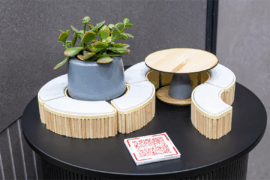
From the spark of an idea on the page to the launch of new pieces in a showroom is a journey every aspiring industrial and furnishing designer imagines making.

The undeniable thread connecting Herman Miller and Knoll’s design legacies across the decades now finds its profound physical embodiment at MillerKnoll’s new Design Yard Archives.
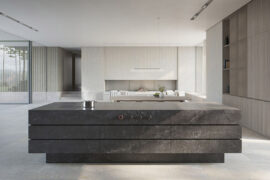
For those who appreciate form as much as function, Gaggenau’s latest induction innovation delivers sculpted precision and effortless flexibility, disappearing seamlessly into the surface when not in use.

London-based design duo Raw Edges have joined forces with Established & Sons and Tongue & Groove to introduce Wall to Wall – a hand-stained, “living collection” that transforms parquet flooring into a canvas of colour, pattern, and possibility.

BLP’s new Sydney Children’s Hospital, Randwick building brings together paediatric care, family-centred design and Australia’s first Children’s Comprehensive Cancer Centre in a major addition to the Randwick Health & Innovation Precinct.
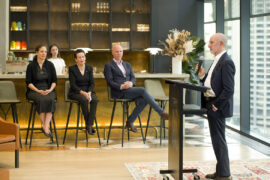
The eponymous practice founder reflects on four decades of work in a new book launched by Lord Mayor Clover Moore, tracing lessons from New York to Sydney and revisiting seminal works including 8 Chifley Square and the Andrew “Boy” Charlton Pool.
The internet never sleeps! Here's the stuff you might have missed
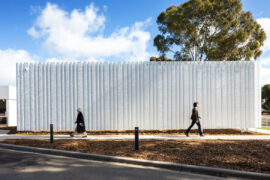
Through expert architecture, EBD Architects has provided a human face to great design and created a project that enhances the lives of people and community.
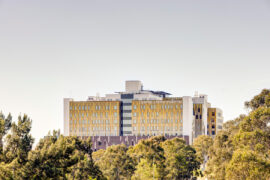
The BLP Managing Director & Principal has been named recipient of the very first Australian Health Design Council (AHDC) Gold Medal Award.